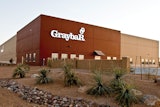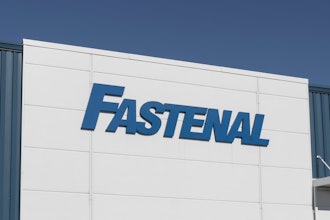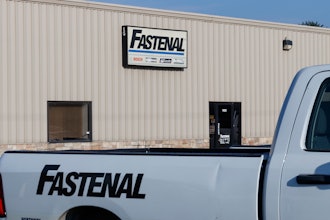
“The heart has reasons that reason cannot understand.”
- Blaise Pascal, mathematician and scientist
Pascal is claiming that people do things for their own reasons, and those reasons don’t have to make sense. Humans are not purely rational, we’re emotional, too. Think about it…. If we were purely rational, nobody would engage in high-risk activities like speeding, texting and driving, or bungee jumping.
Since people are rational and emotional, our decisions are logical and emotive. If robots made buying decisions, logic would be the only factor —but humans make these decisions.
The content of our presentation appeals to the rational, logical side of buying; the context appeals to the emotional side of buying. Value-added salespeople understand that buyers are rational and emotional. Therefore, a value-added presentation is rich in content and context.
Here are some tips to appeal to the buyer’s logic and emotion in your next value-added sales presentation.
Use Analogy
In John Pollack’s book, Shortcut, he emphasizes how analogy helps us spark innovation and sell our great ideas. Pollack shares research suggesting that analogy may lie at the core of all decision making. Analogy is the comparison of two things based on similarity for the purposes of explanation.
Humans are lazy thinkers. We look for previous associations and parallels when making decisions. We do this to simplify decision making. We analyze previous situations and determine if they are similar to the current decision we are trying to make. If the previous situation is similar, we decide in a similar way.
Analogy is an effective way to draw a parallel to another aspect of the buyer’s business. Find other examples where the buyer has made a decision based on value and not price, then show the linkage with your solution. Analogy simplifies the decision-making process. Use an analogy that is familiar to the buyer and draws a parallel to another aspect of their business.
Make it Sound and Look Familiar
Presentations are about the buyer, not the seller. Buyers are more likely to accept a solution if it’s familiar. When a presentation sounds familiar and looks familiar, buyers are more likely to buy.
In a recent seminar, one salesperson explained that he likes to use buyer buzzwords in his presentation. Buzzwords make the presentation sound familiar. Every buyer uses certain buzzwords of value. Identify your buyer’s buzzwords of value and use them in your presentation.
These extra steps make the presentation look familiar. The salesperson explained that his goal is to present a solution that is familiar to the buyer. The familiarity reduces the uncertainty associated with an unknown solution.
Ask yourself, “What can I do to make this sales presentation look and sound familiar to the buyer?”
Show Common Ground
Imagine going on a first date. As you look across the table, you’re probably asking yourself, “What do I have in common with this person?” Wouldn’t it make sense to ask this same question while courting a prospective customer?
What does your company have in common with the buyer’s company? Companies that are similar work well together. In your next sales presentation, demonstrate the common ground you share with your prospective buyers.
One salesperson explained that she uses common ground in the closing phase of the presentation. She explained that she will close a sales presentation by highlighting all the similarities between her company and the prospect. Then she’ll ask a question, “Wouldn’t it make sense that two companies this similar work together?”
Use the Value-Added Jargon
Presenting your solution is a positioning opportunity. If you want to be viewed as the value-added partner, refer to yourself as the value-added partner. Referring to your company, your products and services, and yourself as the value-added partner builds perceived value. Perceived value raises the customer’s expectations and establishes new criteria. Consider the following feeder statements in your next presentation:
“Here are some of the value-added services we provide.”
“As a value-added partner, here are some of the extras we provide.”
“Here is what our value-added solution will do for you.”
Sell the Opportunity Value
To the buyer, sometimes the cost of doing nothing is greater than the cost of moving forward with your solution. The cost of doing nothing is the buyer’s opportunity cost. Make the buyer painfully aware of the cost of doing nothing. For the buyer to change, they must be aware of their pain. Pain is a stronger motivator than gain.
Buyers also have to be aware of the gain. We call this selling the opportunity value. To understand the opportunity value of your value-added solution, answer the following question:
“What does your solution give the buyer the opportunity to do tomorrow that they cannot do today?”
Opportunity cost makes the buyer painfully aware of the cost of doing nothing. Opportunity value focuses on the long-term gain and gives the buyer hope.
Present a Bigger Solution
Price shoppers are small thinkers. They view nothing special about their needs. If there is nothing special about their needs, any solution will do. If you want buyers to think bigger, present bigger solutions.
Too many salespeople just sell products. If you’re just selling products, you open the door to too much competition. Answer these three questions to present a bigger solution.
- “Why buy this product?”
- “Why buy from this company?”
- “Why buy from me?”
These value-added presentation tips will help you appeal to the buyer’s logic and emotion. Value-added salespeople understand that buying decisions are not purely rational. Use these tips as a checklist before your next presentation. Put yourself in the buyer’s position to better understand their reasons. Remember, buyers make purchasing decisions for their reasons, not yours.
Paul Reilly is a speaker, sales trainer, author of Selling Through Tough Times (McGraw-Hill, 2021), and coauthor of Value-Added Selling, fourth edition (McGraw-Hill, 2018). For additional information on Paul’s keynote presentations and seminars, call 636-778-0175 or email [email protected]. Visit www.TomReillyTraining.com and sign up for the free newsletter.























